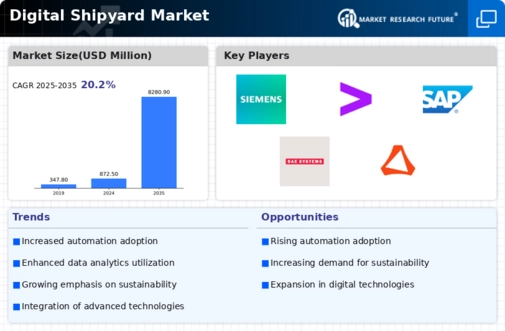Digital Shipyard Market Summary
As per Market Research Future Analysis, the Digital Shipyard Market is poised for significant growth, driven by advancements in technology and increasing international seaborne trade. The market is expected to reach USD 4,768.33 Million by 2032, with a robust CAGR of 20.2%. The digital shipyard concept enhances operational efficiency, safety, and speed in the marine industry, providing tangible benefits during design, construction, and service phases. However, challenges such as cyber threats and high software acquisition costs may hinder growth.
Key Market Trends & Highlights
Key trends influencing the Digital Shipyard Market include technological advancements and increased investment.
- Market Size by 2032: USD 4,768.33 Million.
- CAGR during forecast period: 20.2%.
- Significant growth driven by advanced vessel procurement by navies globally.
- R&D segment dominated the market in 2019, with increasing activities expected to drive growth.
Market Size & Forecast
| Market Size | USD 4,768.33 Million by 2032 |
| CAGR | 20.2% |
| Dominant Segment in 2019 | Research & Development |
Major Players
Siemens (Germany), Dassault Systèmes (France), AVEVA Group plc (UK), Accenture (Ireland), SAP SE (Germany), BAE Systems (UK), HexagonAB (Sweden), Altair Engineering, Inc. (US), Wärtsilä (Finland), IBM Corporation.















